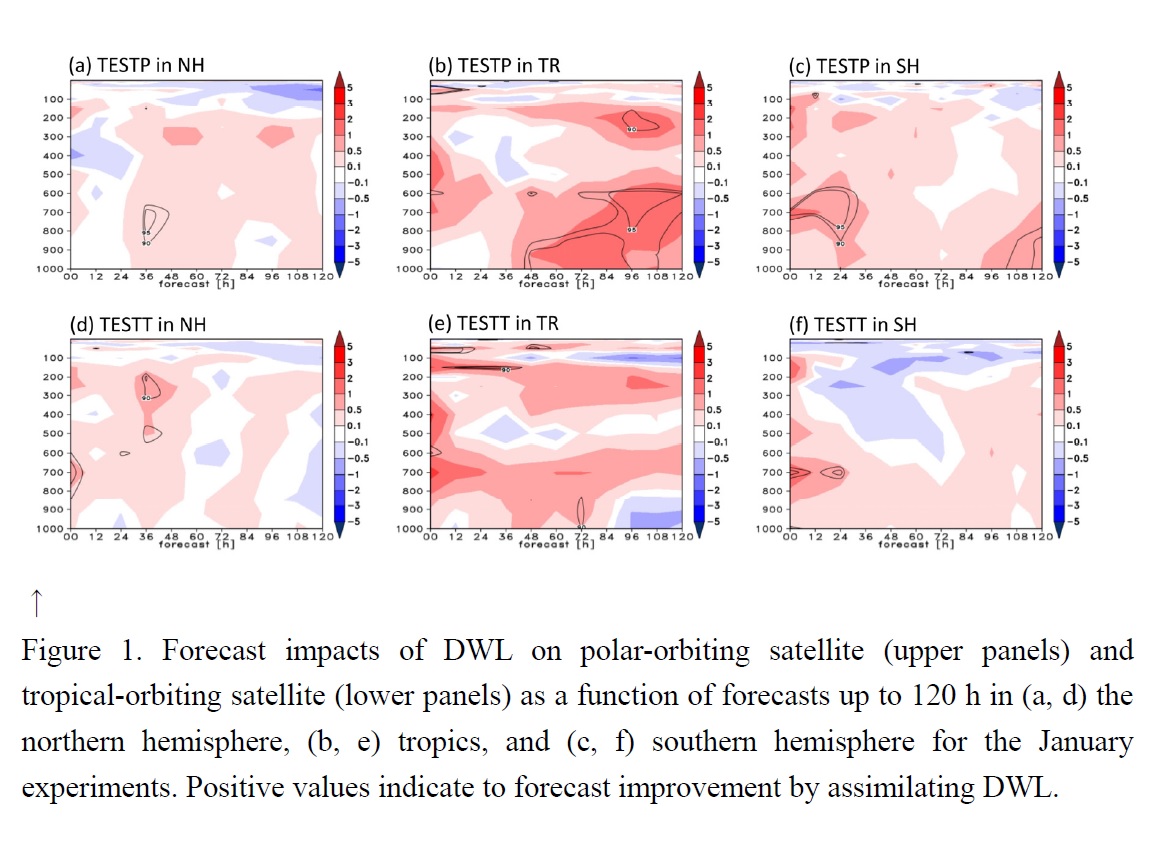Graphical Abstract
Okamoto, K., T. Ishibashi, S. Ishii, P. Baron, K. Gamo, T. Y. Tanaka, K. Yamashita, and T. Kubota, 2018: Feasibility study for future space-borne coherent Doppler wind lidar, Part 3: Impact assessment using sensitivity observing system simulation experiments. J. Meteor. Soc. Japan, 96, 179-199.
https://doi.org/10.2151/jmsj.2018-024
Graphical Abstract with highlights
Highlights:
- The impact of a future space-borne Doppler wind lidar (DWL) on numerical weather prediction (NWP) was evaluated by using an observing system simulation experiment (OSSE) based on a sensitivity observing system experiment (SOSE) approach.
- DWL on either polar- or tropical-orbiting satellites was overall beneficial for forecasts (Fig 1), with greater impacts for the January experiments than for the August experiments.
- Realistic aerosols and cloud simulations and a full-scale lidar simulator were produced to simulate DWL winds and their quality information. This information allowed us to develop sophisticated quality control and observation errors assignment in data assimilation system. The significance of these procedures was demonstrated in various data assimilation experiments.







